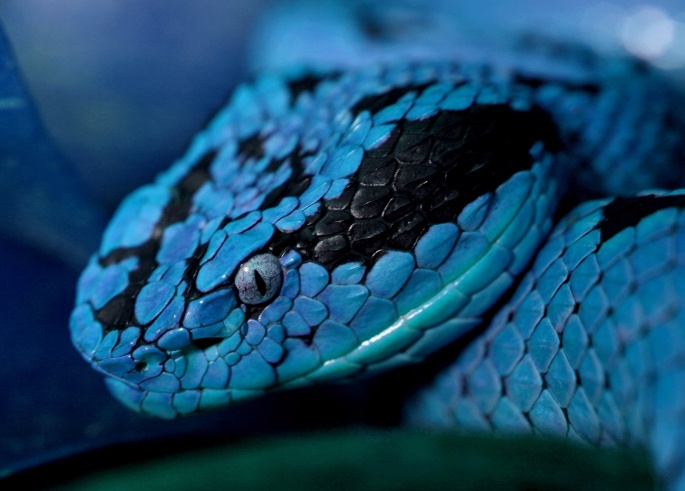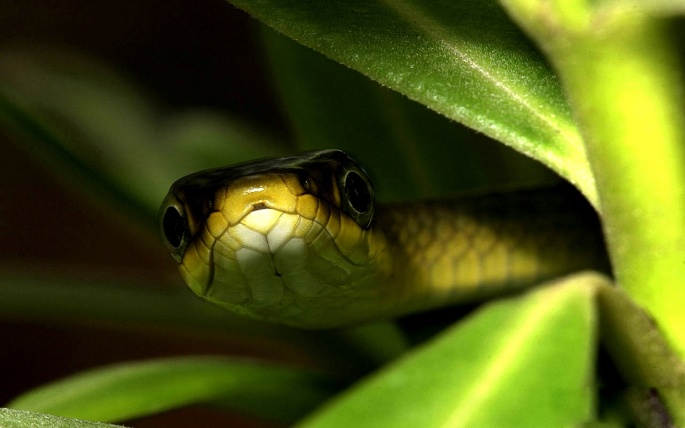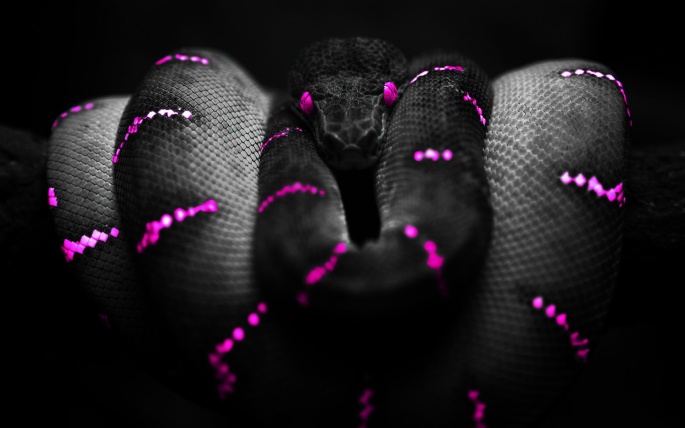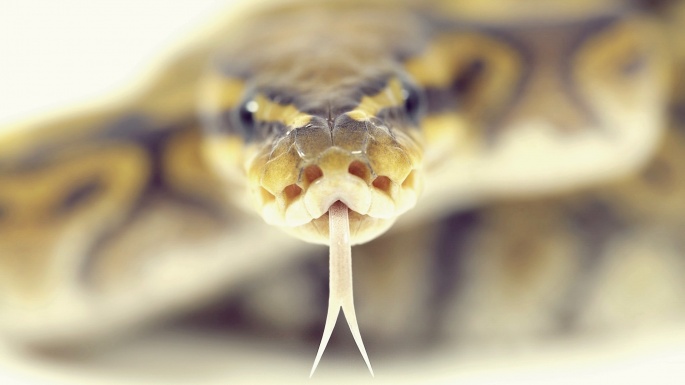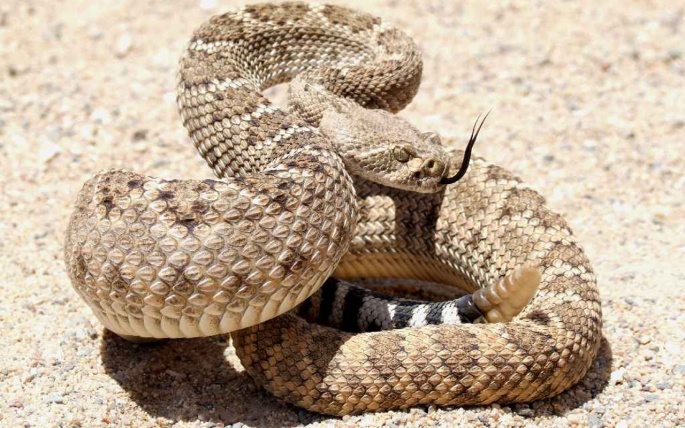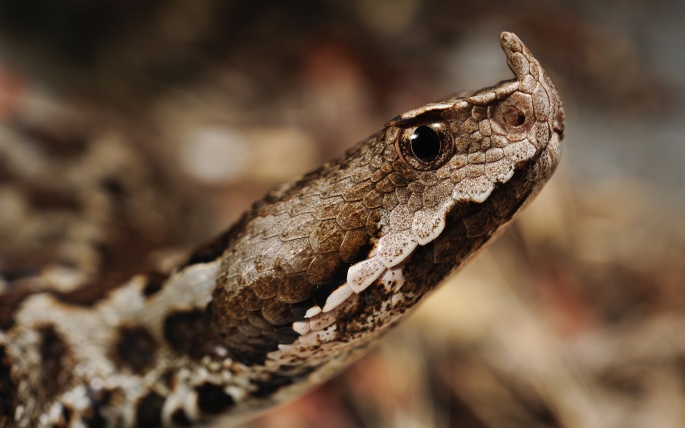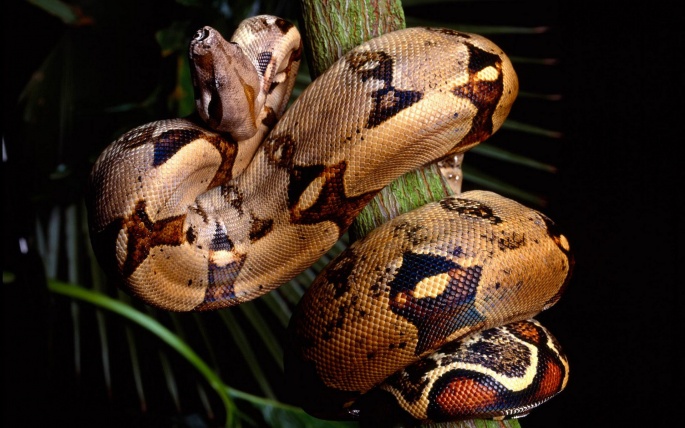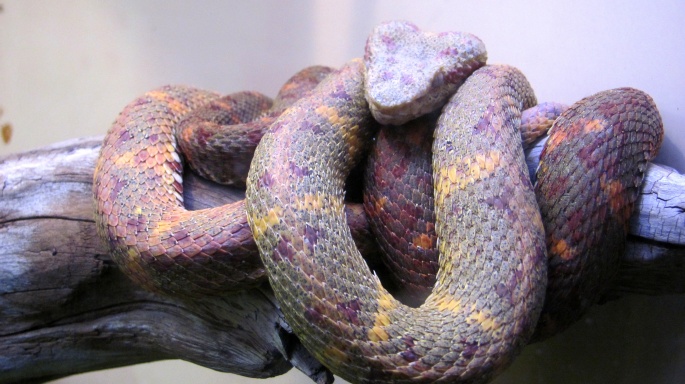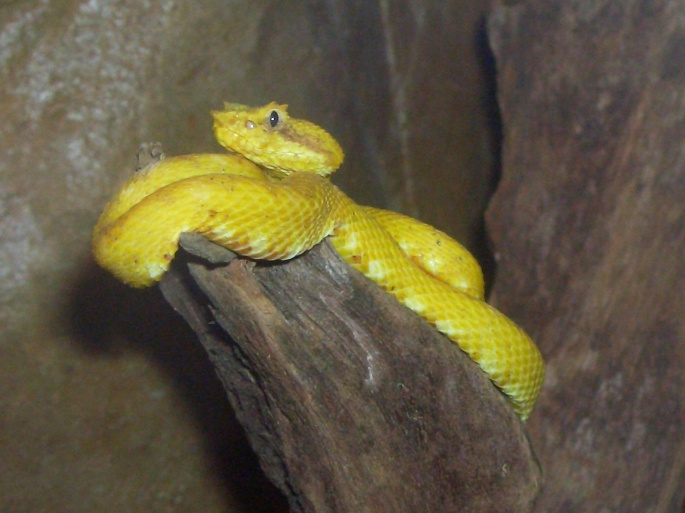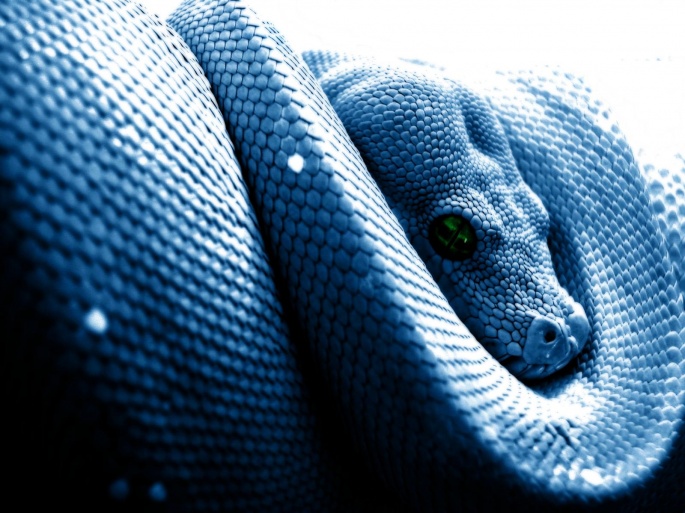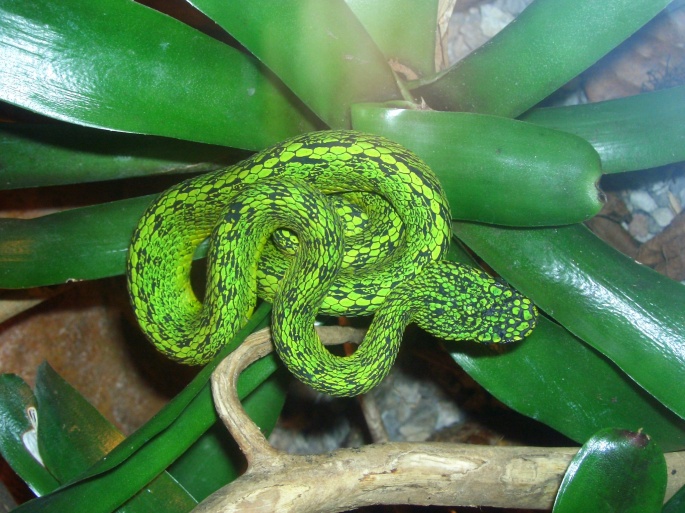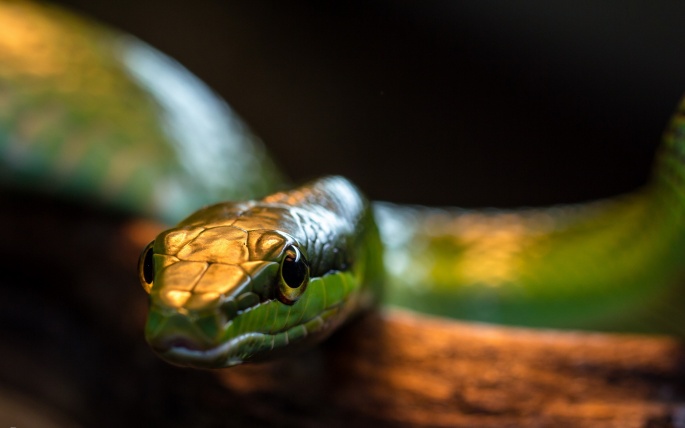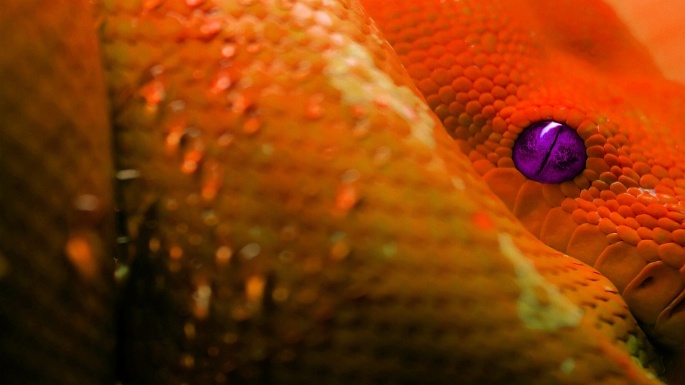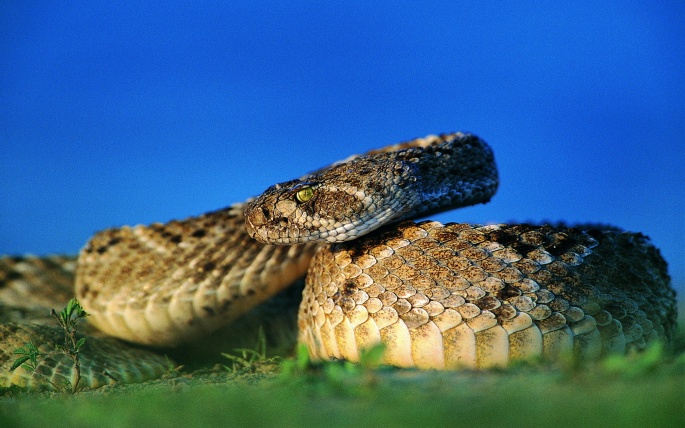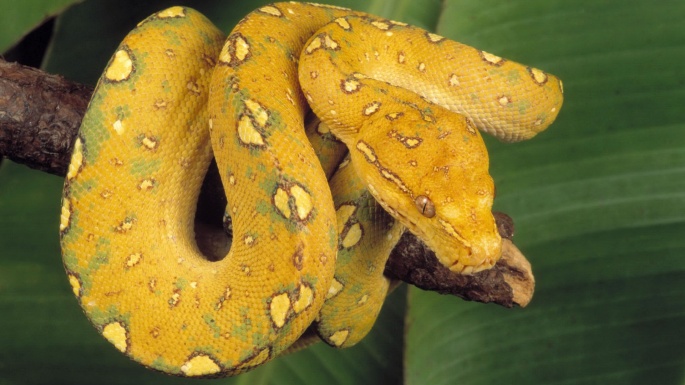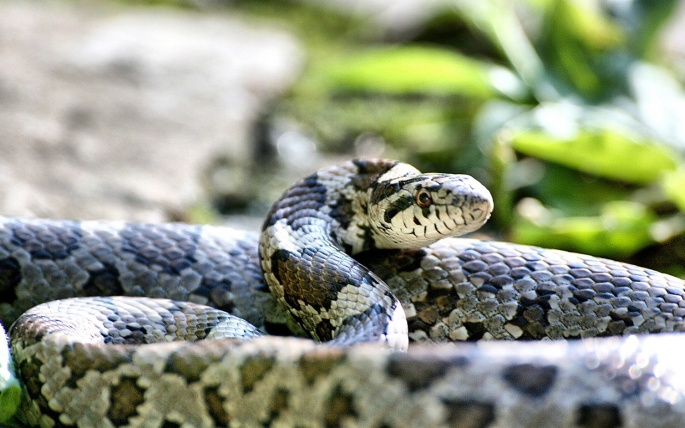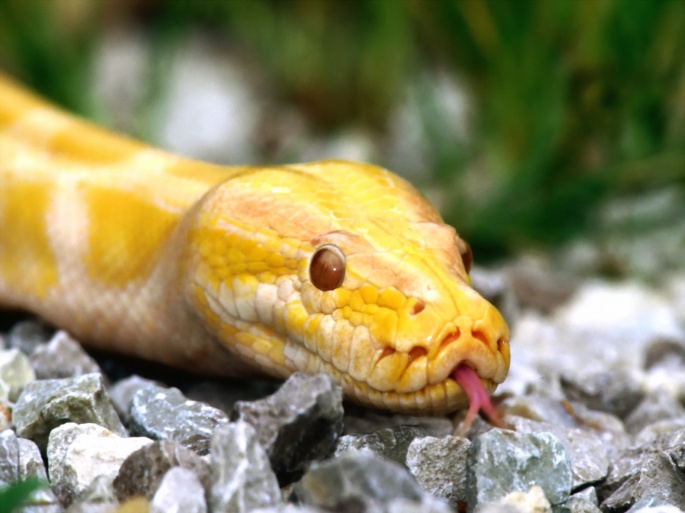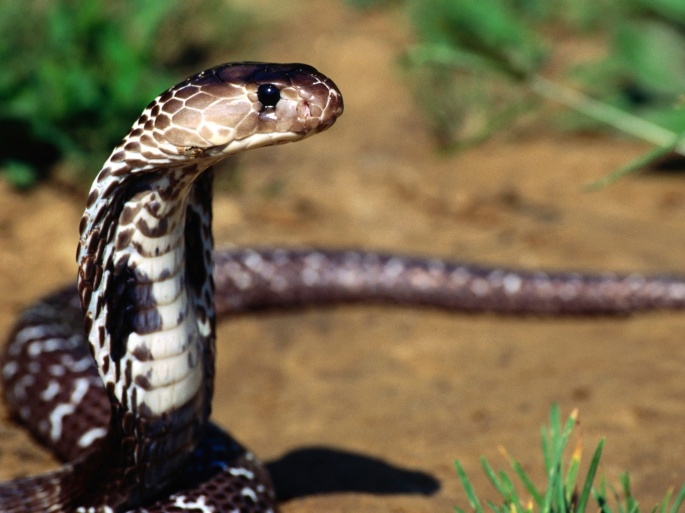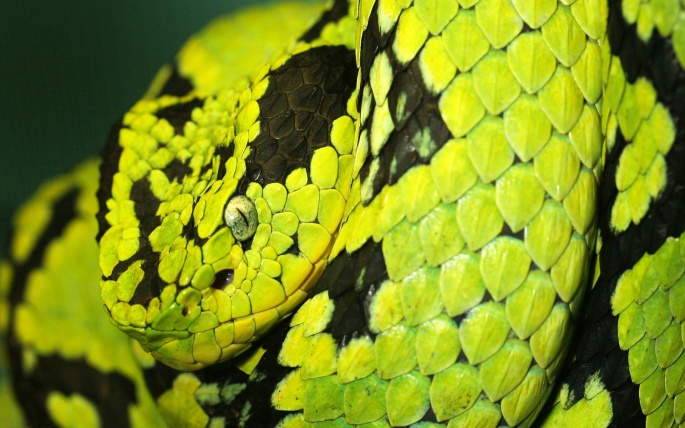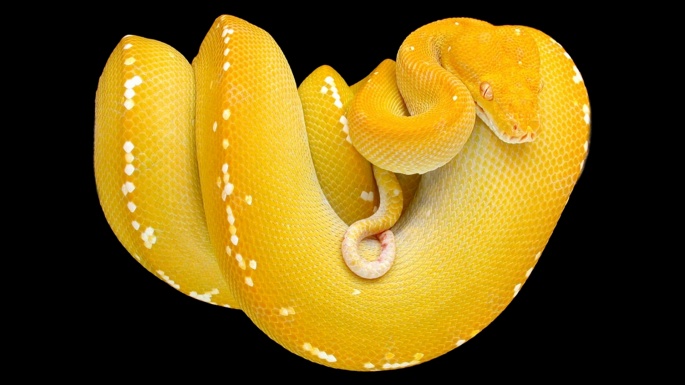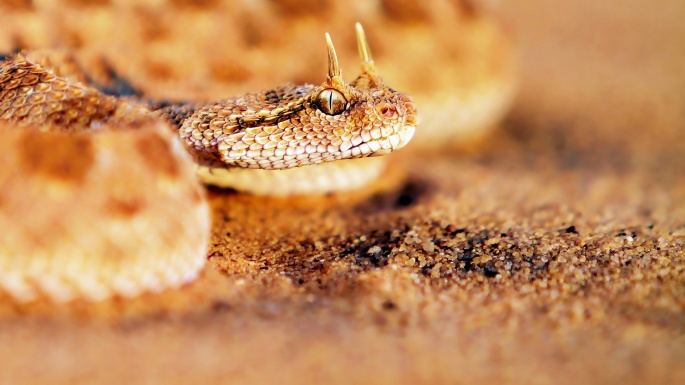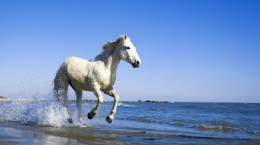Wallpaper resolution up to 4208x2799px
Snakes (lat. Serpentes) - a suborder of the class of reptiles of the scaly order. Snakes live on all continents except Antarctica and a few large islands such as Ireland and New Zealand, as well as many small islands in the Atlantic Ocean and the central Pacific Ocean. Some snakes are venomous, but non-venomous snakes are represented by a large number of species. Poisonous people use poison primarily for hunting (to kill the victim), and not for self-defense.
The venom of some species is strong enough to kill a human. Non-venomous snakes either swallow their prey alive (snakes), or pre-kill (suffocate) it (snakes, boas). The largest known snakes currently living on Earth are the reticulated python and the anaconda water boa.
The length of the smallest living snakes - Leptotyphlops carlae - does not exceed 10 centimeters. The size of most snakes does not exceed one meter.
Serpentology is the study of snakes.
Evolution
Snakes are descended from lizards and are a monophyletic group. According to molecular data, their closest relatives among modern lizards are iguanas and fusiforms, which together form the clade Toxicofera [en]. Some morphological studies indicate that this clade also includes mosasaurs, and they are a sister group of snakes.
The oldest known (as of 2014) snake fossils come from the Middle Jurassic of England (about 167 million years ago, Eophis underwoodi). Since the Upper Cretaceous, remains become relatively numerous.
The evolution of snakes was accompanied by significant changes in the highly conserved regulatory region responsible for turning on the expression of the SHH gene (Sonic hedgehog). As a result of substitutions and deletions within the enhancer, transcription factor binding sites were “spoiled” or lost, and the SHH gene ceased to be switched on in those areas of the embryo where limb buds are formed in all other vertebrates, from cartilaginous fish to mammals. The gene itself and its other regulatory regions remained conserved, as expected, based on the multifunctionality of the SHH gene.
Snakes (lat. Serpentes) - a suborder of the class of reptiles of the scaly order. Snakes live on all continents except Antarctica and a few large islands such as Ireland and New Zealand, as well as many small islands in the Atlantic Ocean and the central Pacific Ocean. Some snakes are venomous, but non-venomous snakes are represented by a large number of species. Poisonous people use poison primarily for hunting (to kill the victim), and not for self-defense.
The venom of some species is strong enough to kill a human. Non-venomous snakes either swallow their prey alive (snakes), or pre-kill (suffocate) it (snakes, boas). The largest known snakes currently living on Earth are the reticulated python and the anaconda water boa.
The length of the smallest living snakes - Leptotyphlops carlae - does not exceed 10 centimeters. The size of most snakes does not exceed one meter.
Serpentology is the study of snakes.
Evolution
Snakes are descended from lizards and are a monophyletic group. According to molecular data, their closest relatives among modern lizards are iguanas and fusiforms, which together form the clade Toxicofera [en]. Some morphological studies indicate that this clade also includes mosasaurs, and they are a sister group of snakes.
The oldest known (as of 2014) snake fossils come from the Middle Jurassic of England (about 167 million years ago, Eophis underwoodi). Since the Upper Cretaceous, remains become relatively numerous.
The evolution of snakes was accompanied by significant changes in the highly conserved regulatory region responsible for turning on the expression of the SHH gene (Sonic hedgehog). As a result of substitutions and deletions within the enhancer, transcription factor binding sites were “spoiled” or lost, and the SHH gene ceased to be switched on in those areas of the embryo where limb buds are formed in all other vertebrates, from cartilaginous fish to mammals. The gene itself and its other regulatory regions remained conserved, as expected, based on the multifunctionality of the SHH gene.
Понравилось? Жми сердечко, оцени нашу работу
Comments
Popular

Flybag (30 wallpapers)
15 December 2025

Anatomiq Board – Advanced Anatomical
15 December 2025
Calendar
| « January 2026 » | ||||||
|---|---|---|---|---|---|---|
| Mon | Tue | Wed | Thu | Fri | Sat | Sun |
| 1 | 2 | 3 | 4 | |||
| 5 | 6 | 7 | 8 | 9 | 10 | 11 |
| 12 | 13 | 14 | 15 | 16 | 17 | 18 |
| 19 | 20 | 21 | 22 | 23 | 24 | 25 |
| 26 | 27 | 28 | 29 | 30 | 31 | |
Archive
Random

Wallpaper resolution 5120x1440 (56
8 October 2024

Kickboxing (56 wallpapers)
12 February 2024

Concrete wallpaper (31 wallpapers)
21 January 2023

Colorful wallpapers (50 wallpapers)
30 October 2022

Super Mario Galaxy 2 (44 wallpapers)
16 August 2024

